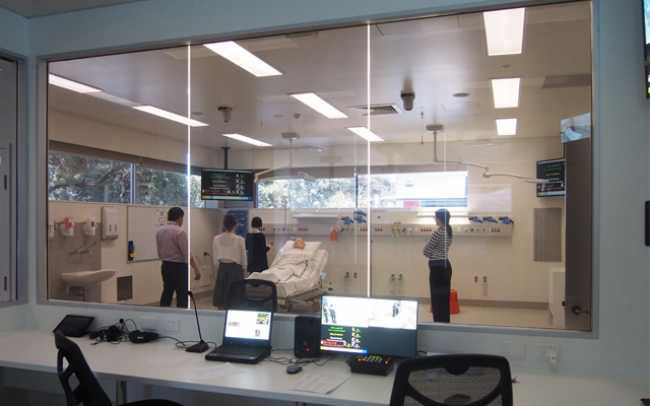High quality comms support immersive learning at SAH
Published: ASIA

AUSTRALIA: Immersive learning has become increasingly popular in the healthcare industry. Educators observe students remotely, aided by interactive mannequins, to provide them with a life-like experience without actually putting a patient in danger. Facilitating operations at The Simulation Learning Centre at The Sydney Adventist Hospital (SAH) Clinical School of The University of Sydney is a two-way communications system comprising equipment from BSS, Clear-Com and Shure. The equipment was supplied by Jands and installed by Fredon.
IS operations and infrastructure manager at Sydney Adventist Hospital, Barbara MacKenzie, describes the Learning Centre as a ‘Big Brother-esque’ studio encompassing ‘two simulation environments; one as a critical care ward and one as an operating theatre. In the middle is a control room with one-way glass facing into both rooms. The clinical educator running the training scenario has been set up with what amounts to a stage management communication system.’
During a typical training session, five students are provided with Shure ULX-D wireless bodypacks with WL185 lavalier microphones. These signals are then fed through a BSS Blu series DSP for mixing, echo cancellation and routing and a main mix outputted for the teacher. The audio and video feeds can both be recorded for debriefing later as well as streamed to a breakout in real-time to be viewed by other students.
Another instructor inside the simulation room and referred to as ‘The Confederate’ also liaises with and assists the control room teacher. The Confederate and control room are linked via a Clear-Com HME DX210 wireless communications system, which also takes feeds from the BSS Blu. Both educators can communicate via their Clear-Com HS15 and HS15-D headsets, the ceiling speakers, or through the mannequins directly.
‘Having clear, good quality microphones is exceptionally important,’ explained Wanda McDermott, clinical skills educator at Sydney Adventist Hospital Clinical School. ‘When I teach, my students are expected to talk through and explain what they’re doing. The more they verbalise, the better their retention of the knowledge. When it comes to high-end simulation scenarios for registrars and anaesthetists, we really want to listen to the types of communication they’re using. We’re assessing the human factor in their decision making process when looking after a critically unwell patient. It’s the communication between the team members that we’re really listening to because we’re fine-tuning their communication skills to learn how to keep on top of stress. If you can understand everything, you can debrief effectively. You lose your teaching ability if you can’t hear what’s being said. If it’s garbled, there’s no point.’
‘The technology solution we have implemented in the SIM Centre started with a concept brief from consultants WSP Group,’ Ms MacKenzie continued. ‘We worked through this iteratively with the end users, the equipment distributors and systems integrator Fredon. Fredon have been fantastic, and we appreciate their ongoing support. The facility has been funded by both private and government funds, including generous in-kind support from Jands. The really great achievement here is how the technology implementation directly enhances the learning experience and the teaching outcomes for the students.’
